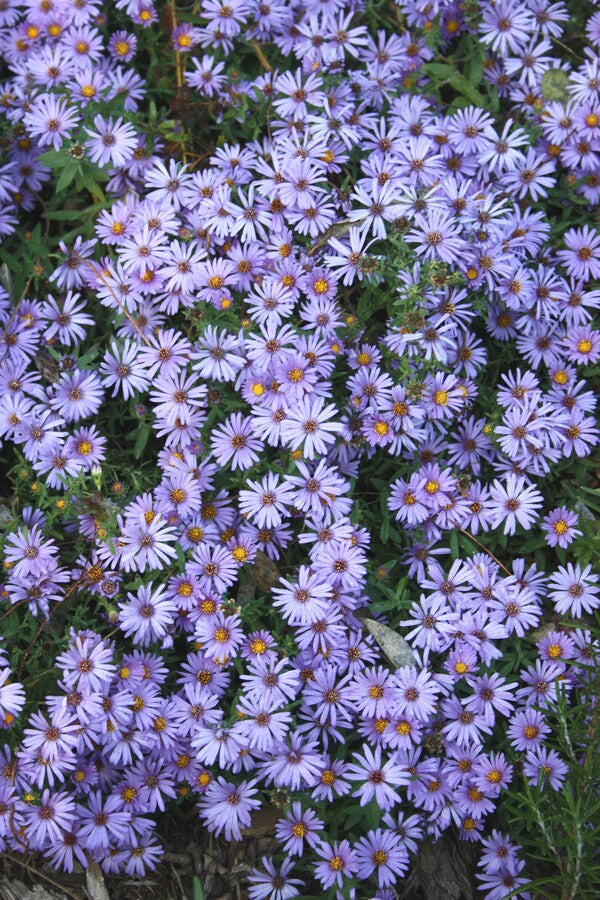Symphyotrichum oblongifolium 'Fanny'
Fanny's Aromatic Aster
Item #: 341
Zones: 4a to 9b
Dormancy: Winter
Height: 24" tall
Origin: United States
Pot Size: 3.5" pot (24 fl. oz/0.7 L)
(aka: Aster oblongifolius) We originally acquired this selection of the North American native Symphyotrichum oblongifolium from Montrose Gardens, which acquired it from Ruth Knopf of Boone Hall Plantation in South Carolina. Ruth acquired the aster from her maid, Fanny, who acquired it as a pass-along plant from her grandmother. Symphyotrichum oblongifolium 'Fanny' is one of the last asters to flower in our garden, usually in October and November. 'Fanny' (the aster, not the maid) makes a nice 2' tall clump to 8' in width and is smothered with 1" blue flowers starting in October (NC)...awesome! For a fall show in a hot dry site, a nice 'Fanny' is a hard thing to beat.
Maintenance:
The main maintenance requirement of this aster is to cut it to the ground before new growth starts in spring. The tidy-minded gardener can cut it to ground as soon as he feels a need to do so once it is done blooming. Symphyotrichum oblongifolium 'Fanny's' can benefit from a hard cut back in early to mid summer if it grows in a more sprawling habit than desired. In full sun and a lean diet it often doesn't need this pinching back. It is readily propagated by mid-spring stem cuttings or by division.
Growing Conditions:
Symphyotrichum oblongifolium prefers full sun and average moisture level. It is readily pleased without pampering.
Garden Value:
Symphyotrichum oblongifolium 'Fanny's' is a show stopper in bloom and blooms for most of the month of November here in zone 7b Piedmont, NC. It is valuable for this late season floral display and for supporting late season pollinators especially migrating Monarch Butterflies. It is worth growing other selections of Aromatic aster such as 'Raydon's Favorite' which bloom for the month of October. 'Fanny's Aster' is quite handsome in its dried winter form; its spent flower heads resembling pale stars.
Natural Impact:
This is a superb plant for pollinators late in the growing season.

-
Other Attributes
Genus: Symphyotrichum
Flower Color: Purple/Lavender
Leaf Color: Green
Bloom Time: Fall
Container Role: Thrillers
Garden Themes: Cottage Garden Plants , Green Roofs , Living Wall
Other: Butterfly Attracting Plants , Cut Flower Plants , Drought Tolerant Plants , Groundcovers , Pollinator Plants , North American Native Plants , North Carolina Native Plants , Plants that Attract Birds , Rabbit Resistant Plants , Texas Native Plants , United States Native Plants


